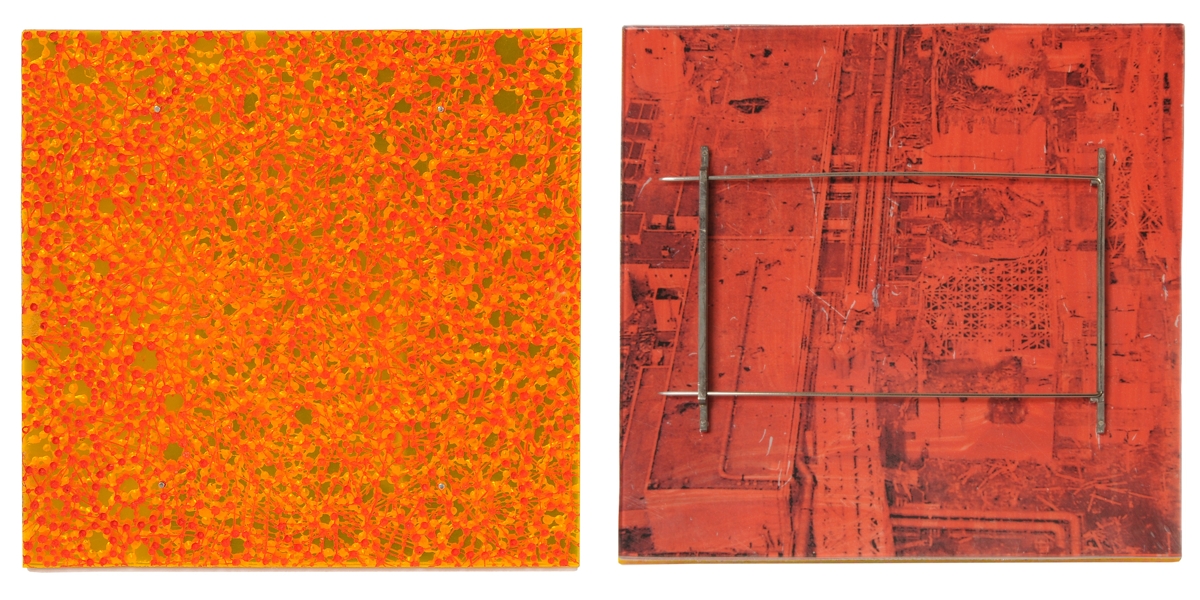Images shown are of the front and back sides of this work
To gaze at German artist Bettina Dittlmann’s pin is to experience a kind of indeterminate optical space, which flickers between a sense of depth and surface. Do we look through two or more layers of a cellular network of red and yellow nodes, into an endless orange depth, or is that orange a limit, a surface containing and reflecting the network in a shallow space? If the front of the pin evokes science in a general but indeterminate way, then the image on the back suddenly brings a specific place and time into view. This is an aerial view of the nuclear plant at Fukushima, Japan which suffered a reactor failure in the tsunami of 2011. That seductive, shimmering surface is revealed to be radioactive, and the work becomes a memento mori, inviting anyone who knows of both sides to reflect on the transience of life. Dittlmann’s previous work consisted of technically innovative three-dimensional objects crafted from enameled wire, like complicated drawings in space. In this pin, the sense of circles growing into unruly networks remains, but what once grew up and out is now flattened and dispersed across a square plane. Dittlmann’s works are in the collections of the Metropolitan Museum of Art; the Victoria and Albert Museum, London; and the collection of Deedie Rose.
